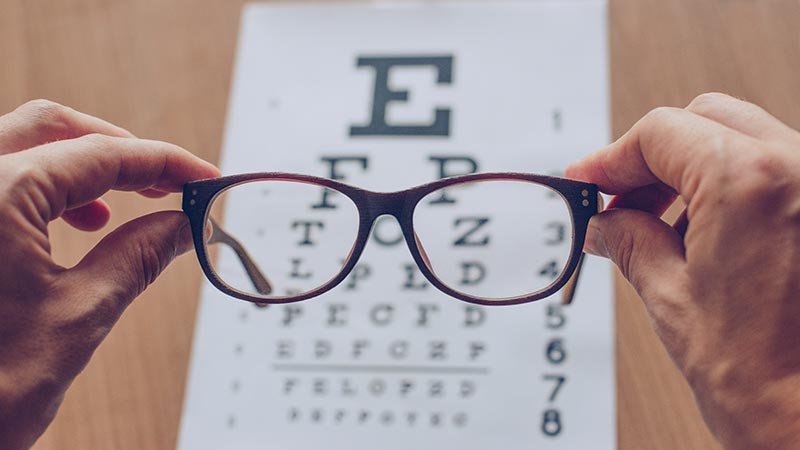Glaucoma Diagnosis and Management

Glaucoma is a serious, sight-threatening eye disease often called the “silent thief of sight” due to a lack of symptoms in the early stages. The doctors at Nova Vision Center have the expertise and advanced diagnostic technology to detect glaucoma in its earliest stages before any symptoms are obvious to patients.
What is Glaucoma?
The optic nerve is a bundle of about one million individual nerve fibers which transmits the visual signals from the eye to the brain. Glaucoma is a group of eye disorders that cause progressive damage to the optic nerve and results in loss of vision which cannot be restored.
Types of Glaucoma
There are several types of glaucoma, many of which do not have any signs or symptoms in the early stages. While some types of glaucoma are associated with high IOP (intraocular pressure), not all types are, so glaucoma can occur without high IOP.
Common types of glaucoma include:
-
Open-Angle Glaucoma
The most common type of glaucoma, open-angle glaucoma is characterized by the drainage canals in the eye becoming clogged over time.
Intraocular pressure (IOP) will rise because the correct amount of fluid can’t properly drain out of the eye, and the increased pressure inside the eye will damage the optic nerve over time. If diagnosed early, open-angle glaucoma usually responds well to treatment designed to preserve vision. If left untreated, open-angle glaucoma can lead to irreversible vision loss.
-
Acute Angle-Closure Glaucoma
In this type of glaucoma, the angle in most areas between the iris and cornea (front surface of the eye) is closed, which reduces fluid drainage and causes a rapid increase in intraocular pressure. Acute angle-closure glaucoma is a medical emergency that requires immediate attention. Symptoms of acute-angle closure glaucoma include headaches, eye pain, nausea, seeing rainbows around lights at night, and very blurry vision. This type of glaucoma develops quickly, and if the high pressure inside the eye is not reduced within hours, it can permanently damage vision.
The treatment for acute angle-closure glaucoma is surgery.
-
Normal-Tension Glaucoma
In normal-tension glaucoma, damage is done to the optic nerve without the presence of high intraocular pressure.
Am I At Risk for Glaucoma?
Everyone is at risk to develop glaucoma. The best way to avoid vision loss due to glaucoma is to come in for regular comprehensive eye exams.
There are certain groups at higher risk for glaucoma, including African Americans, people over 60, people who have a family history of glaucoma, Hispanics in older age groups, Asians, people who have used steroids for long periods, people with a history of eye injury, high myopia, and hypertension.
Diagnosing Glaucoma
Careful evaluation of the optic nerve is essential to the diagnosis and treatment of glaucoma. The doctors at Nova Vision Center may use the following diagnostic tests during an eye exam to screen for glaucoma.
Dilated Eye Exam
Your doctor will use special eye drops to dilate your eyes and using a special device with a bright light, will thoroughly examine the structure of your eyes, including the color and shape of the optic nerve.
Tonometry
We will measure the intraocular pressure (IOP) in the eyes using a tonometer. While the average range for IOP is between 12 – 22 mm Hg (millimeters of mercury), not everyone falls within this range, and it’s still possible to have glaucoma even if IOP is in normal range.
Optical Coherence Tomography (OCT)
We will use Optical Coherence Tomography (OCT) to examine the optic nerve and the thickness of the nerve fiber layer.
pERG/VEP (Pattern Electroretinography/Visual Evoked Potential)
Visual evoked potential is a non-invasive testing method that provides objective information about the function of the entire visual system, and pERG (pattern electroretinography) measures the function of the retina, the light-sensitive layer in the back of the eye. These tests are useful in the early diagnosis of glaucoma and other eye diseases.
Visual Field Testing
To determine if glaucoma has damaged the vision, we will conduct a test to map a field of vision to see if there are any blind spots. During this test, you’ll be asked to look straight ahead into a machine and press a button whenever you see a spot of light in your peripheral vision. These spots of light will vary in brightness and intensity, so some of them will be easy to see, and others will be less obvious. Depending on the results of the test, your doctor may want to repeat it to see if the results are the same.
Treatment for Glaucoma
Treatment for glaucoma depends on the type of glaucoma, but for most people, it will involve lowering intraocular pressure through laser surgery, medications, conventional surgery, or a combination of these methods. Vision loss from glaucoma cannot be restored, so preventive eye care is a must.
